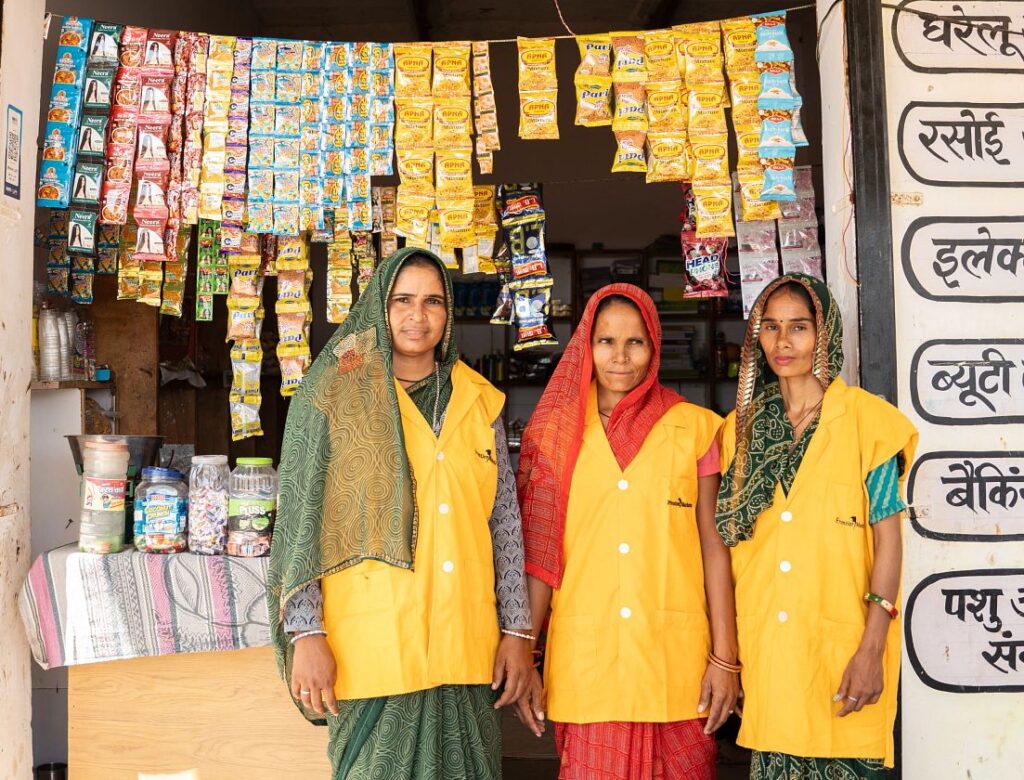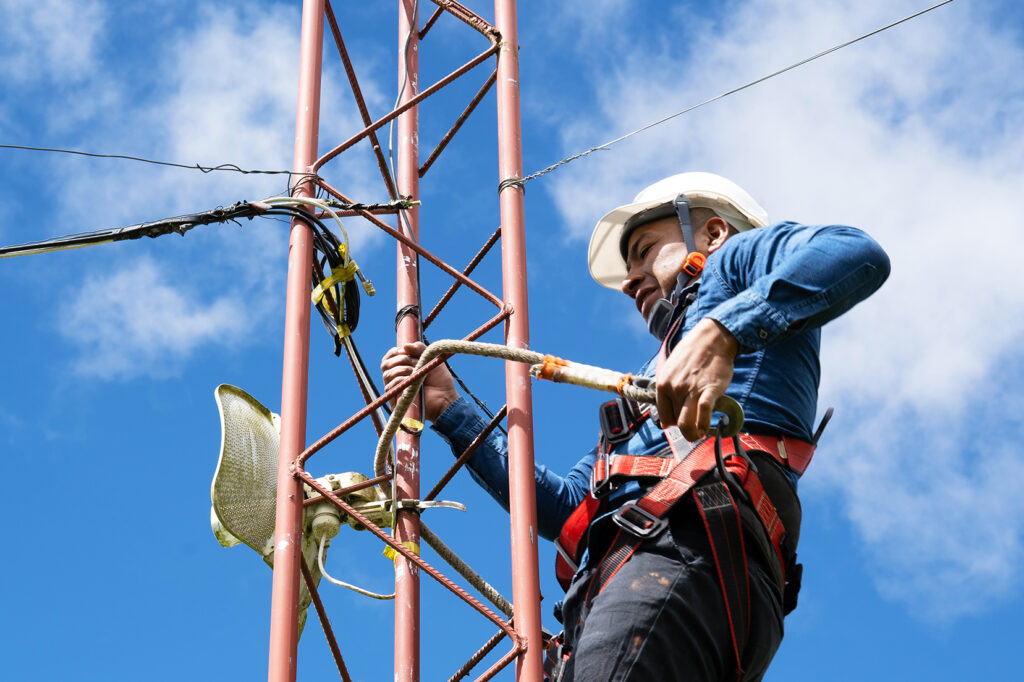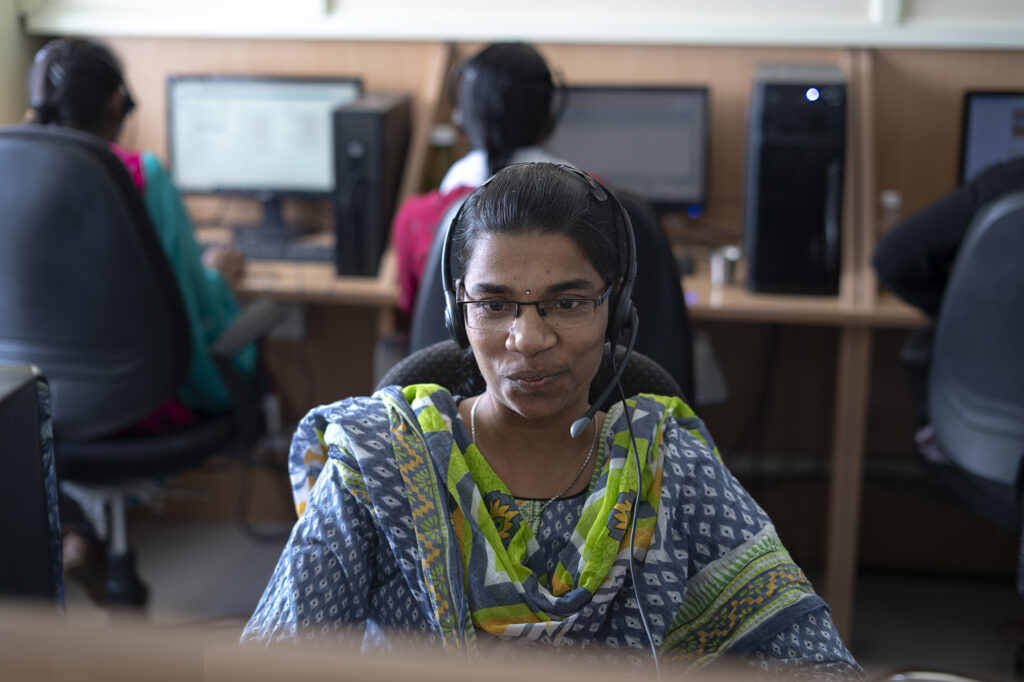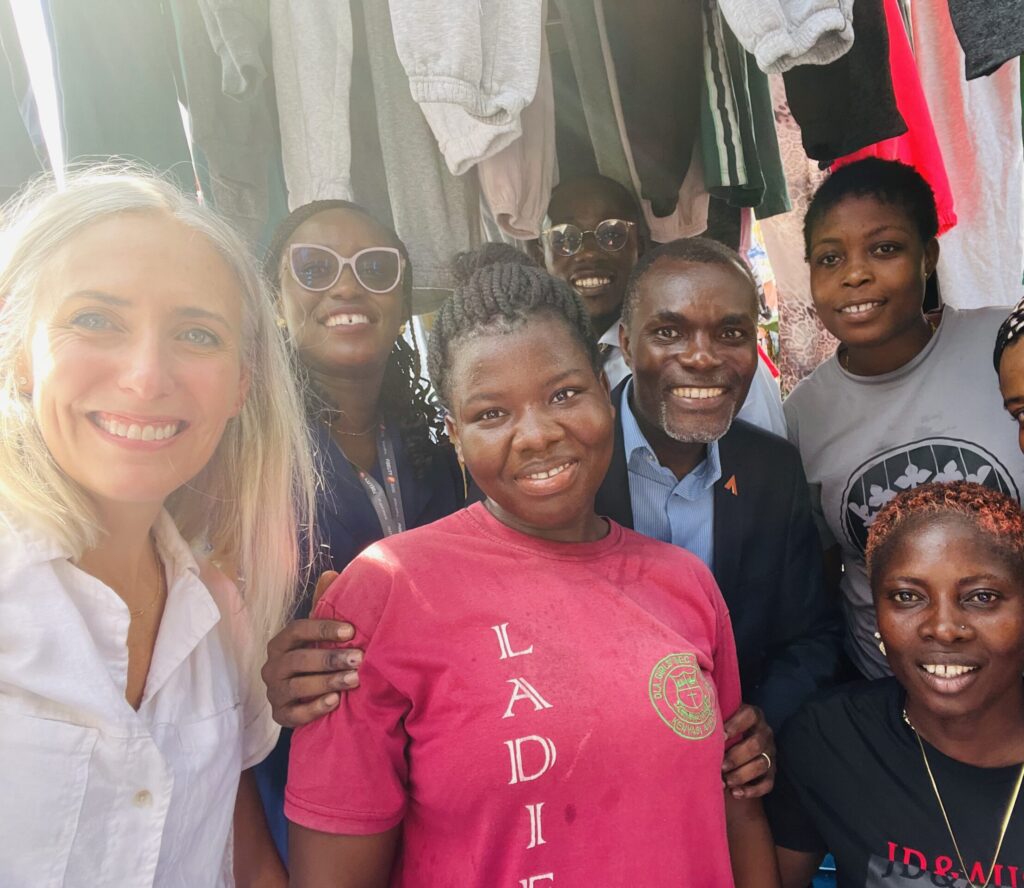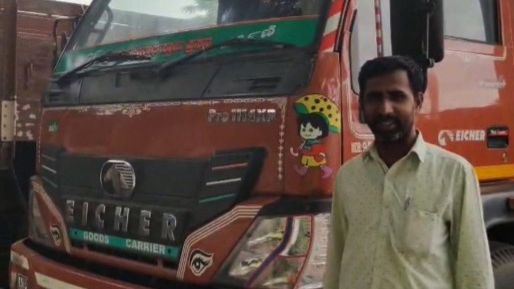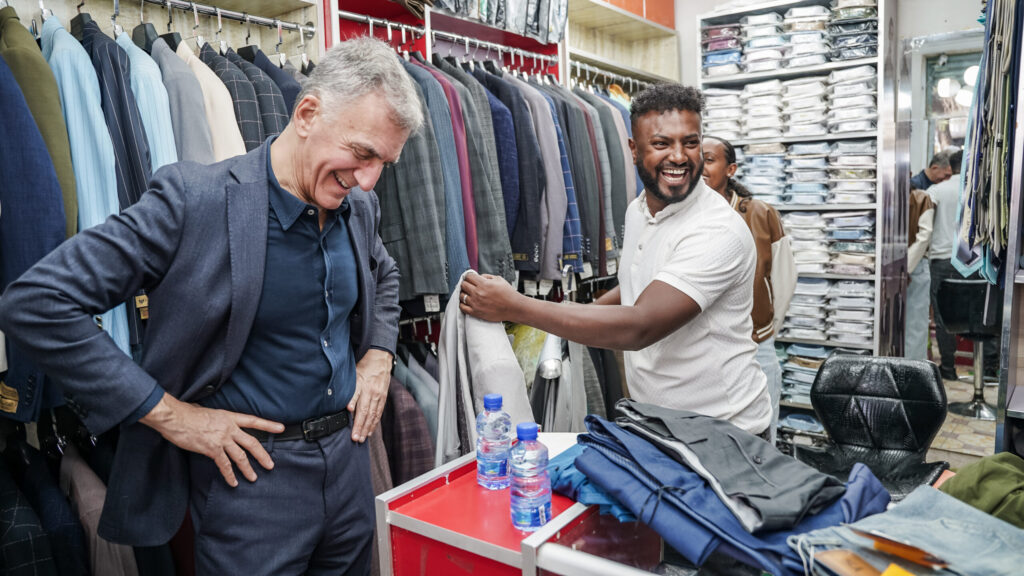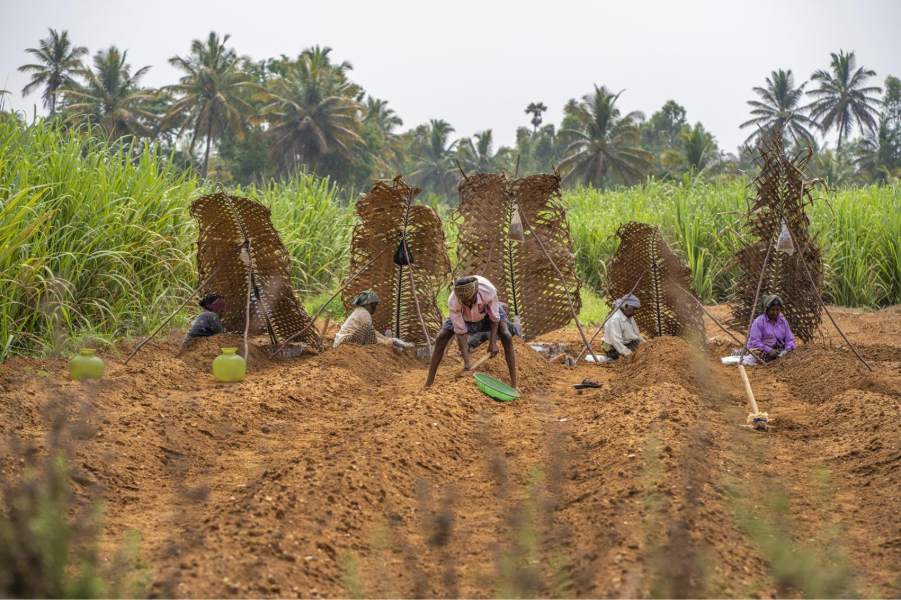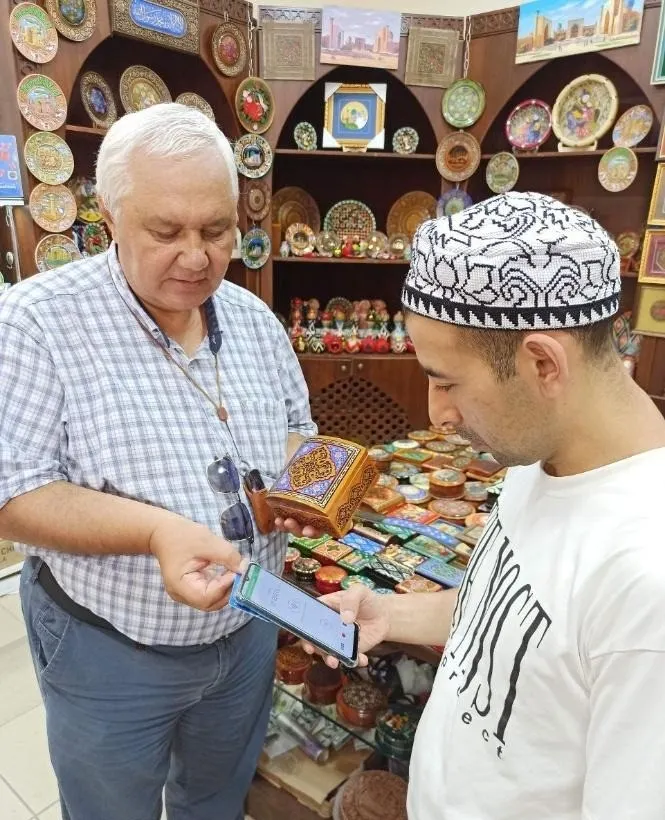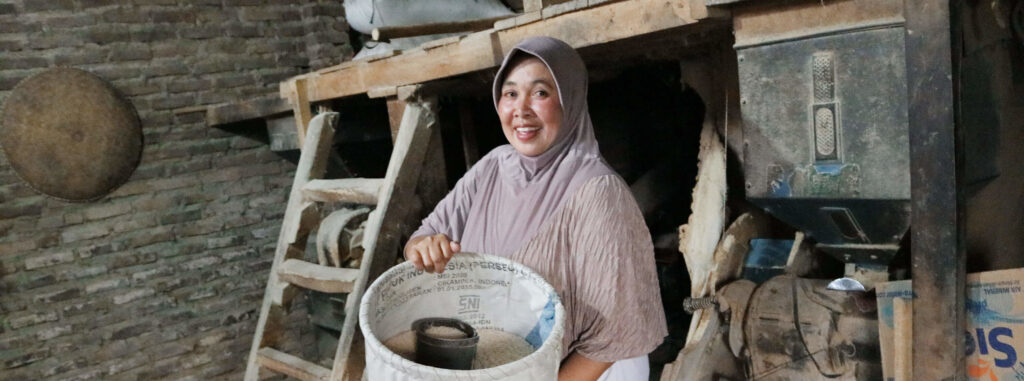
Ibu Oom Rohmayato owns a rice milling business with her family in Majalaya, Bandung in West Java, Indonesia. She dreamed of expanding her family’s business and needed access to working capital to purchase additional unhusked rice to mill, so she turned to group lending to grow her business. She joined a group in her community and together they applied for a working capital loan from Bina Artha Ventura (BAV), a financial service provider in Indonesia and partner of Accion.
Group lending creates opportunities for women in rural areas like Ibu Oom who otherwise would not have access to financial services. 80 percent of group lending participants are women, and 65 percent live in rural areas where traditional banks don’t have a presence. By forming groups of people in the same communities that can guarantee each other, group lending uses social collateral to serve those without any credit history. Since group lending first began, it has relied heavily on frequent in-person interactions. Loan officers build relationships with their customers from the initial application to biweekly cash disbursement and repayment collection, and members participate in group meetings and often mentor each other. But as the COVID-19 pandemic has necessitated social distancing and quarantines, we must rethink the group lending process and how if it might function digitally.
The case for human-centered design in group lending
Digitization has become an important path forward for financial service providers and businesses during the pandemic. Many group lending providers have the ability to digitize their application processes and implement cashless transactions, but that might not be the best solution for their group lending customers. As providers consider digitizing their products, they must ask themselves if digitization will benefit the group lending customer, or if will it create more problems for them. While current circumstances discourage in-person gatherings, the solution to adapt group lending is not technology alone — we must pursue a human-centered design approach.
The core of design thinking is a focus on the end-user by building deep empathy and understanding of their lives while designing products and solutions. If we know our users, we will always build according to their needs and desires and can cultivate trust. As a part of our partnership with Mastercard to drive the digital transformation of underserved micro and small businesses, BAV is in the process of launching a mobile phone-based model so they can continue to serve customers like Ibu Oom during the pandemic and into a more digital future. Christian Banno, Chief Business Officer of CASEA and board member of BAV, describes BAV’s approach to designing digital products for their customers, “When you try to digitalize the process for the clients — when you try to make clients adopt digital means — things become more complicated because we need to make sure that the client is at the center of the change. We need to make sure that the change is not only benefiting the microfinance institution, but that it is benefitting and enriching the life of the client.”
Can group lending operate in a digital world?
Group lending can only succeed when there is trust between customers and financial institutions, and that trust is built through many physical meetings and interactions with the customer. Forming these relationships digitally may become easier in the future as more and more customers use digital tools in other aspects of their lives. But an element of human touch will still be needed for group lending — especially for those clients in rural areas who have minimal exposure to digital transactions.
Dvara KGFS serves groups and individual customers who run small businesses in rural India through a network of branches in remote areas. They’ve invested in building mobile phone-based solutions to serve their customers, including a digital payment platform for customers to manage their money remotely while the pandemic prevents people from visiting branches. They plan to add more features to their digital platform to enhance the services that people receive and to make branches more relevant by converting them into cash checkout points using the Aadhaar Enabled Payment System (AEPS) and facilitating online utility payments using the Bharat Bill Payments System (BBPS). Joby CO, Chief Executive of Dvara KGFS, says, “Going forward … I don’t see that the branches will go away, but I see the branches can really become more relevant as customers can access a lot more services digitally through the branches using the branch internet.”
For group lending participants to feel comfortable with new tools, they must be designed with the end-customer first, using a human-centered approach. Providers must pursue a hybrid approach for clients where human touch complements their new technology. “We need to maintain physical touch because we don’t want to exclude them. We are here to include people, we’re not here to exclude people,” says Christian. To learn more about how we might reimagine group lending, listen to our recent conversation with Christian and Joby here.

